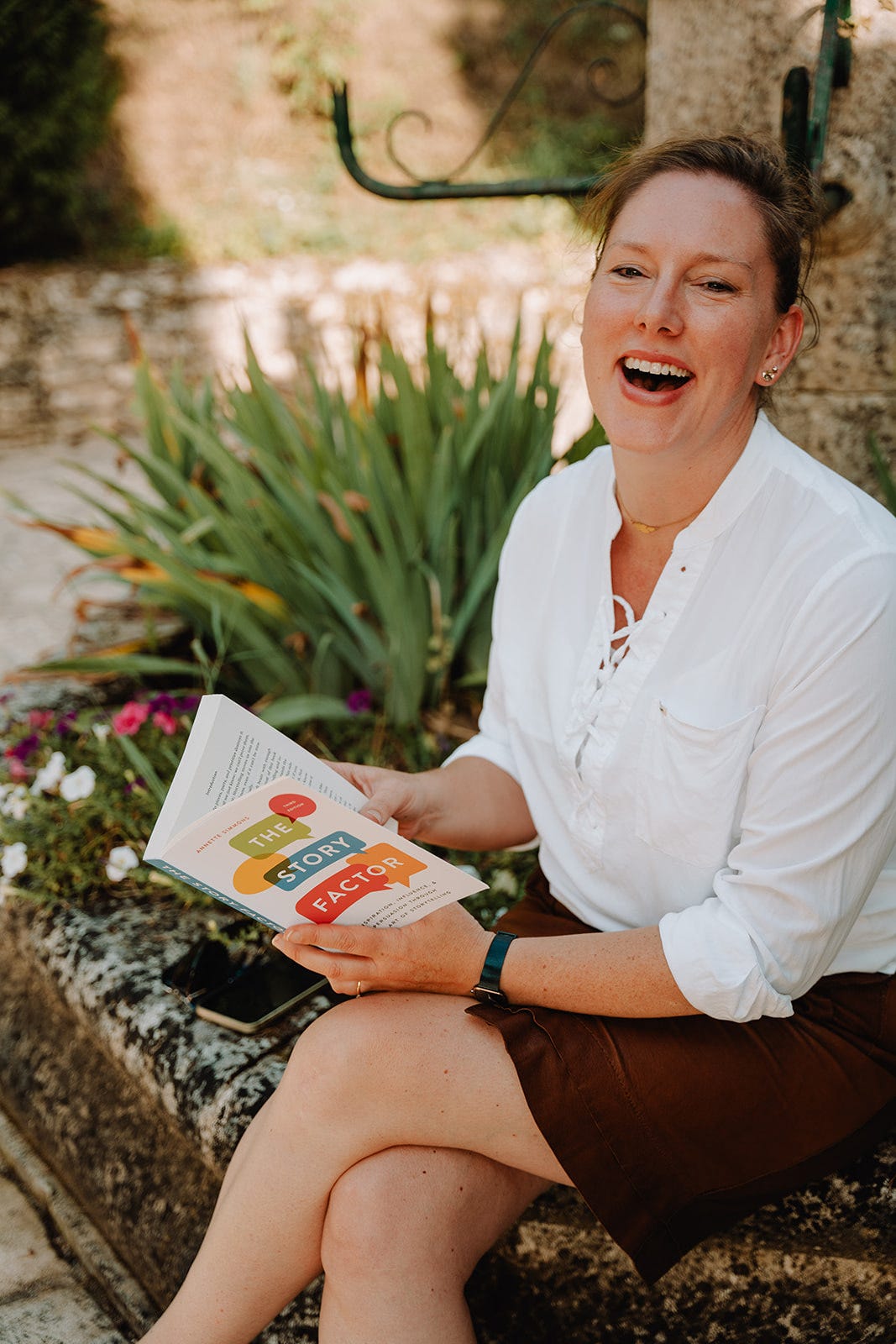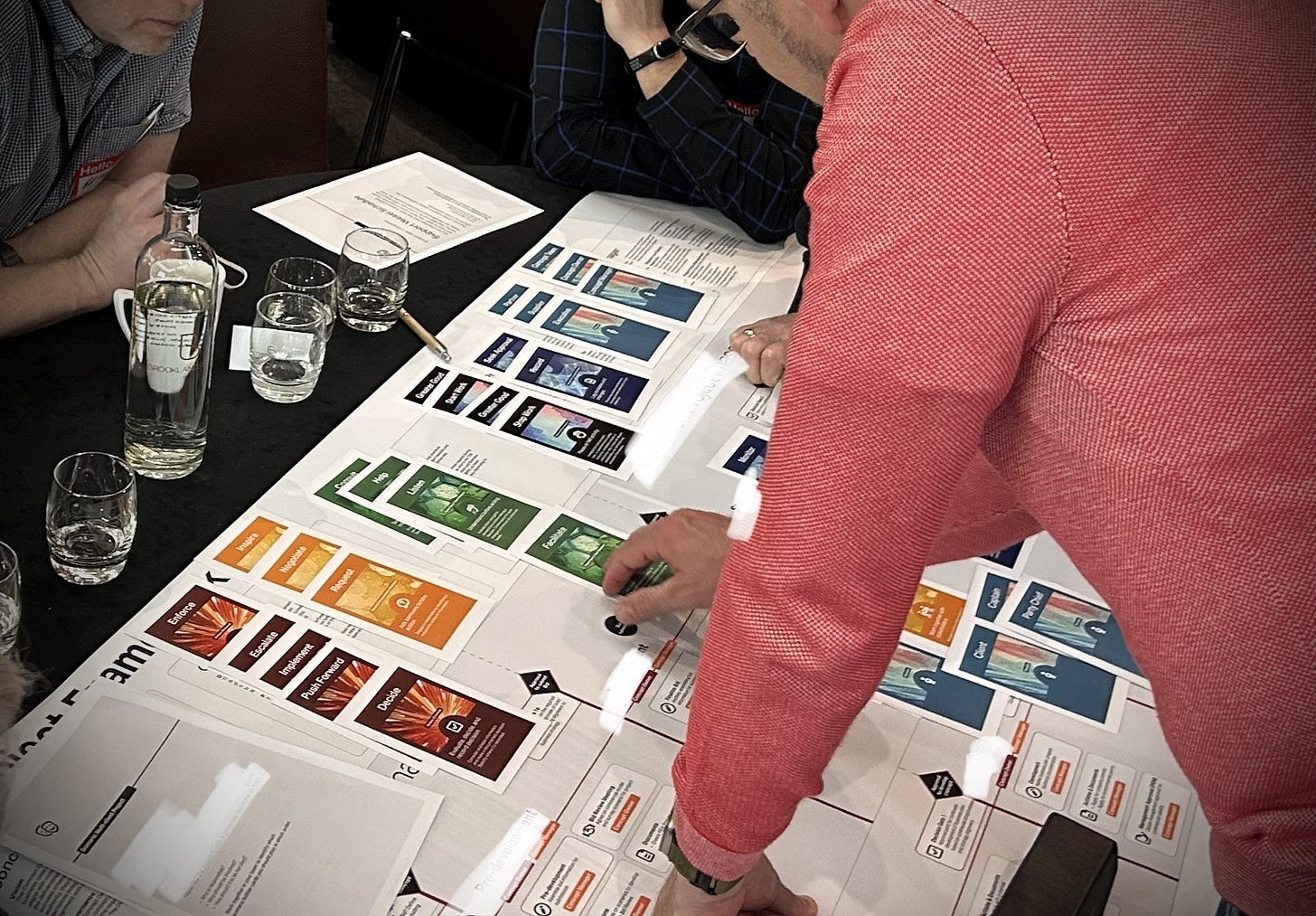Stop Trying to Communicate the Change. Learn How to Weave Stories That Move People
Learn how telling one little story can communicate your cause better than straight up… communicating your cause.
I took a deep breath and said “I’d like to tell you a story”. I knew I had to win their hearts, they had to understand who I am, why I’m in front of them on this day and I needed them to understand why they were there. I needed to line up their mindset for doing what I was going to ask them to do. And to prepare them for their interaction with each other, both here and now, and later.
We've got 120 people packed in. It's a tight room, it's long, carpeted, with two columns of round tables going up either side of the room leaving a kind of runway up the center. Eleven tables altogether. Ten or eleven people on a table. Cabaret style (that's with a little gap at the front so that all chairs are facing the front). It's about 20 meters from the table in the center at the back, to the front of the room, where I'm standing.
My heart races, as it usually does at the start.
As my announcement of a story sinks in, I can feel the room drop their shoulders and prick up their ears. In a few sentences time, I'll get into the swing and the sea of faces will become a sea of friendships. I know, I'm mushy. It brings me joy.
A room full of onshore and offshore operations management. It has to be said, I can count the number of women in the room on one hand. And I'm one of them.
"My partner and I…" (personal)
"moved into our house about 4 years ago." (Not the story they were expecting, I do like to surprise.)
"We quickly got to know the couple that live next door and have become good friends. They often come round for dinner or drinks and we have a laugh together." (Where on earth is she going with this?)
"One evening they were due to come round for dinner and we got a message asking, can we bring a board game?
"Anyone in the room a board game fan?" (I know it won't be many. One person enthusiastically puts their hand up. I smile and acknowledge their bravery with a…)
“Great, thank you!” (People look around.)
"Like most of you, I'm not really into board games either, but I thought, okay, I'm a joiner, you know, let's do it. We'll say yes.
“So, the evening arrives, and our friends show up with the board game. You know how boardgames work. You pack it out of the box and there's the instructions and the different cards, and the board itself, all the bits, and you put it out on the table, and the first thing you have to do is just kind of understand what you're trying to do!
"Hopefully someone's played it before and you can just get started." (Few people revel in reading the instructions or doing the boring online training. We all just want to get started, learning on the job.)
“By the way, has anyone heard of this board game, Pandemic? Okay, some nods, some shakes.”
(Now I should be on track for an Ahha! Moment.)
"The idea with this board game is that you beat the Pandemic, so you collaborate together as a team to beat the board game! Which is quite different to other board games where you're competing against each other, right?
"The first thing you want to do is play a round, just to see how it goes, right? A dud round that doesn't count.
"So we play a round and it goes like this:
“Everybody is given a little card with a role on it and you've got a little picture and it says, Doctor or Construction Worker or you're an Immunologist. The card has a little description about what powers you have, what skills you have, what you can do.
“The first round's about: Okay, so how does this work? Who am I? Who are you again? What do you do? And trying to figure it all out.
“Of course the world is overrun by a Pandemic and you lose terribly.
“And then…
“on the second round you're like, okay, let's be the same people. And who are you again? What skills do you have?
“And you start strategizing. Because the only way to win is to work together. what you have to do is beat the board game.
“So then, bit by bit, you're looking at all these cards with these roles on getting to know who everyone is, what their different skills are, and start to strategize together to beat the board game.
“I just love this, because it just made me realize how much I love that sort of collaboration - to solve a challenge together.
“And that's exactly why we're here today, to learn about who we all are. And we might not get it right on the first round, you know, but we can try and we can learn about who we all are and what our skills are and we can strategize together and, you know, we can do what we can to beat the board game or to do the best for the company.
“This experience has inspired me to create this workshop for today. I've designed a boardgame for you all to play. I've created these cards and a we're going to use these posters as our boards…
Then we played the board game.
The Game
Each table had a board/poster and my scenario builder cards. I read out a scenario, they discussed and used the cards to build their answer to the scenario. Using the cards makes the whole discussion super tangible. They can point and move things, strategize and collaborate on what the answer might be. There's a key learning in the scenario, but there's also multiple answers and multiple interpretations. Read more about this workshop
We used gamification to open the dialogue and build a common language and understanding together. It's not about beating each other. It's about working together and finding out about each other, about learning each others skills and experience. We lay the foundation for future collaboration, that common understanding of where we're going, what we're doing, and how we're getting there.
Why You Need a Story
By sharing the pain and hesitancy that I had experienced at the mention of a boardgame, I gave everyone in the room permission to have that initial reaction when I told them that we would be playing a boardgame.
By mentioning my attitude (joiner), I inspired and gave permission for everyone to try.
By talking about building understanding of roles I acknowledged the situation we are in - we need to get to know each other. This also gives everyone permission to be curious about each other and reduce the fear that might come with looking like you don't know.
By talking about the first, dud round of the game, I gave permission to fail - and learn. I made this less dangerous.
By referring to the strategizing, I gave permission to try, to explore.
By sharing such a personal story, and giving much insight into who I am and my passion for what I do, I invited friendship.
The vulnerability I showed created a space where, I hope, people could feel safe.
What Challenges Do You Have That Need a Story to Move the Minds of Others?
Leave a comment to let me know. Or tell me how you plan on bringing storytelling to your next communication or transformation challenge. I’d love to hear from you and I promise to answer everyone of you.
Join me next time for more insights into my life as an internal consultant in human centered change design and facilitation.




I absolutely loved this post. You hooked me and inspired me. Thank you!!!